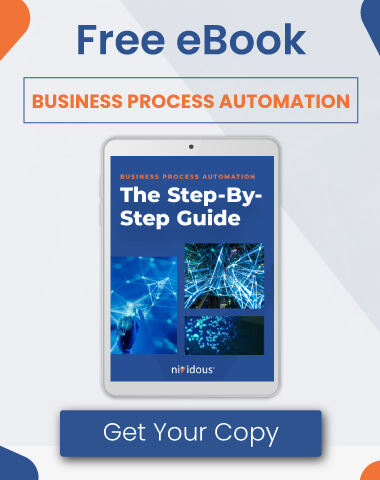No matter what you sell or who you sell to, a better order management process can reduce waste, improve customer relationships, and drive more growth. On the other hand, a breakdown in the order processing cycle can lead to an operational tailspin—and that’s true for Business-To-Consumer (B2C) retailers and Business-To-Business (B2B) suppliers alike. Before we offer advice on optimizing order management flow, however, let’s review the basics. What is order management, exactly? David Birdsall, senior manager at retail and consumer goods consulting firm The Parker Avery Group, defines the term by breaking it down into its component parts.
“Order management is the ability to capture a customer order, identify the optimal fulfillment path, and generate a customer promise date,” Birdsall explains. “In a nutshell, order management consists of three high-level processes: order capture and orchestration, order maintenance and tracking, and returns management.”
Here’s a closer look at each element of the order management process. (We separated Birdsall’s “capture and orchestration” into two steps since they each require a lot of detail, but think of them as part of a unified workflow.)
Outlining Order Processing Procedure
1. Order Capture
“Capturing” an order is the process by which a company obtains the data that comprises that order: customer information, product information, payment details, etcetera. Orders may be captured manually through a digital order entry tool. In B2B transactions, they may go through an Electronic Data Interchange (EDI), a company-to-company electronic system that standardizes purchase orders, invoices, and other business documents. A third option is capturing orders through a customer portal.
This last order capture technique is predominant in the B2C transactions so familiar to today’s online shoppers. An e-commerce website is essentially a customer portal, an interactive catalog that allows buyers to make a purchase directly.
Regardless of the channel—and in this era of omnichannel retail, there are many channels, from e-commerce sites to call centers to brick-and-mortar stores—every order passes through a company’s centralized order-capture engine. Most often, that’s enterprise software known as an Order Management System, or OMS.
2. Fulfillment Orchestration
Once an order flows into your OMS, the tricky part begins. “The orchestration is the magic,” Birdsall says. “It’s about fulfilling the order and finding the optimal path.” Retailers may source their products from any number of places. Maybe you have a third-party supplier who makes the product. Maybe you operate your own network of distribution centers, where the product is already sitting on a shelf. Or you might manufacture products to order. For many retailers, it’s a combination of all the above.
“Orchestration is all about finding where that product is to meet the customer’s need date,” Birdsall says. That need date will vary, especially between B2C and B2B sales. Most B2C transactions create an immediate need; the faster you can ship a product, the happier your customers will be. In B2B sales, companies may place orders months in advance. Either way, retailers need to plan for meeting those needs, which is to say they need effective fulfillment orchestration. And this is the stage at which the function of order processing in supply chain management becomes clear: For companies at this juncture, efficient processing via automation is key to maintaining the complex relationships, contracts, and brand ethos involved in their unique supply chain.
The key tool for this task is, again, the OMS. These systems find optimal fulfillment paths—the supplier or location most likely to meet the customer’s need date—based on priorities set by the user. That’s especially helpful in conditions of constraint, like those caused by pandemic-associated supply chain disruptions. Users can configure an OMS implementation to prioritize conditions like:
- Higher-margin products. Every company has limitations in terms of staff size, resources, and time itself. Sometimes you can’t take every available order; in that case, you may wish to prioritize sales of the products that contribute the most to your bottom line.
- Customer priority. If you run into production or shipping delays, you may have to choose between customers for on-time fulfillment. That’s not ideal, but OMS settings give you the ability to preserve higher-value customer relationships by prioritizing one set of orders over another.
- Capacity management. Whether it’s inventory levels or production capacity, an OMS can track supplier capacity to make better decisions on product sourcing. It can choose one supplier over another based on that supplier’s existing inventory or capacity to create enough products to fill your orders.
- Shipping lanes. Freight costs vary widely based on distance. You might build rules into your OMS that limit these costs, assigning each of your distribution centers to nearby shipping locations.
Given all these variables, managing every order by hand can create serious inefficiencies. A digital system like an OMS takes all the details into account, automating some of the toughest decision-making in the order management process—but that’s only the tip of the automation iceberg. (More on that later in this article.)
3. Order Maintenance And Tracking
Orders can change midway through the fulfillment process. Customers may update quantity or preferred ship dates. You may run into a shortage and have to modify an order. Responding to these changes is an important element of the order management process, and you can’t respond to what you can’t see. That’s one reason retailers must track their orders from start to finish.
The other reason is that customers expect visibility; plan to provide tracking capabilities to customers, too, via email, text, or a shipper’s customer portal. Track orders from the entry point all the way to delivery. Even then, the order management process may not be over.
4. Returns Management
In 2019, the average return rate for purchases in the U.S. was 8.1%, with $41 billion out of the total $309 billion value of those returns coming from online purchases. Retailers need systems capable of issuing refunds (or providing store credit, alternate products, or other measures of exchange), receiving returns, inspecting those items, and restocking them. These processes fall under the umbrella of “reverse logistics.”
But with the growth in AI availability, e-commerce sellers are also experimenting with ways to reduce returns in the first place. “There are some human behaviors baked into returns,” says Dylan Max, head of growth at Netomi, a conversational provider focusing on building high-quality customer service chatbots. A clear example comes from the apparel e-commerce industry, where it’s common for customers to buy two sizes with the express intention of returning one, Max explains.
A machine learning system can recognize these purchases and, using conversational AI like chatbots, offer the customer alternatives to a return. “The AI can integrate with your OMS,” Max says. “Maybe it checks the customer contact record and says, ‘In the past, you bought this size shirt. Did it fit well, yes or no?’ Then the AI system can make a recommendation that curbs the buyer’s behavior so they never have to buy that extra piece of clothing and return it.”
That’s a quick introduction to a general order processing procedure. The real question is how to improve this process. Here are five ideas from the experts.
5 Tips For Optimizing The Order Management Process
1. Identify your true pain points.
Every order management problem has two components: A goal and a capability that falls short of that goal. To solve the problem, you must bridge this gap. There are two ways to do so: You can grow capability. Intelligent automation is a key tool to scaling capabilities—but it’s not the only way to bridge the gap. You can also move the goal post.
For instance, say you make it a goal to manually verify every step of the order management process. You check and double-check purchase orders, shipping manifests, and customer response—and your team can’t keep up with the workload. But the more valuable goal isn’t to track every order so closely, at least not by hand; it’s to satisfy all your customers. One way to accomplish the true goal is to manage by exception—allowing automated order management services to flow smoothly while escalating complicated cases to your customer service team. Exception management is a strategy that prioritizes your most valuable resource—human expertise—while employing automation to do the rest. You can only introduce a solution like this when you have a clear view of what you want to accomplish.
2. Keep clean data.
Customers appreciate visibility, which includes a quick promise of a delivery date, as well as updates on the status of the order. An OMS or Transportation Management System (TMS) can deliver this promise date—but only if it has accurate data about your logistics processes. Given all the software systems retailers depend on, there’s a tendency for data to get fragmented, with changes reflected in one system but not the next. Yet another software platform—Master Data Management (MDM) systems—helps solve this problem by maintaining a single, centralized set of databases connected to the rest of your software suite. Still, those systems must be integrated.
Robotic Process Automation (RPA) bots provide this integration, with AI technologies like machine learning helping to verify data and omit errors. These RPA bots operate through the software’s user interface, allowing them to verify and share data without custom-coded integrations. Powerfully, they do so with any combination of legacy software and newer, cloud-based solutions.
3. Standardize your processes.
A lot of companies build processes as they go. They may do one thing for one customer and another for the next. As a company grows, this ad hoc approach creates unnecessary complexity and confusion, which inevitably lead to mistakes. That’s why it’s crucial to build standardized workflows—especially as you begin to introduce automation into your processes. After all, automating an inefficient process just scales inefficiency.
The act of discovering and optimizing these processes is called business process analysis, and the good news is you don’t have to figure it out on your own. As a leading provider of hyperautomation solutions, Nividous starts every implementation by analyzing business processes and planning an optimal workflow—all before introducing the Nividous automation platform, which combines RPA, AI, and Business Process Management (BPM) to create true, end-to-end process automation. To learn more about business process analysis services from Nividous, download the datasheet here.
4. Give buyers visibility into order management process flow.
In addition to managing the data involved in any order, these tools also provide detailed reporting; in other words, visibility. That’s not just important for managers, though. Customers have come to expect order updates, which this information provides.
Take a proactive approach to customer communications, with promise dates, shipping updates, and prompt notifications when things go sideways. “No one likes to be the company that has a customer call you and say, ‘Hey, my package didn’t come today,’” Birdsall says. “You want to be able to tell the customer it’s not going to show up ahead of time.” That level of visibility builds trust and brand equity—and shipping notifications aren’t the only way order management and customer service should interact.
5. Integrate order management with broader customer relationship processes.
“With today’s technology and our reliance on internet connectivity, teams that do order management really well focus on what happens after the item is received, as well,” says Max. The most successful retailers take a whole-process approach to customer relationships, one that connects order management systems with broader communication tools and strategies.
It’s a mistake to think of order management processes and customer service as unrelated silos when, in fact, technology can neatly marry the software behind both into a smarter system for maintaining customer relationships. For instance, email and text marketing systems may send customers repurchase alerts at key times—think of the printer company that reaches out when it calculates you should be low on ink.
The machine learning model that predicts the timing of these alerts learns from data about previous orders—and that data comes from the OMS or MDM. These systems need to share data. Without an API or costly and time-consuming original code, smart RPA bots are the best way to create this integration with any combination of software systems. Those RPA bots, however, are just one component of an end-to-end process automation for order management.
FAQs About Order Management And Automation
What is meant by order management?
When we refer to order management, we’re talking about the processes that orchestrate the delivery of your organization’s goods or services once they’re ordered by a customer. These processes manage everything from the purchase of a product to any possible returns or exchanges of that same product.
What is the importance of order management?
Order management drives your organization’s fulfillment of its key brand promises. When customers purchase something from you, they expect to receive it in a timely manner; failure to deliver on this promise could mean a radical shift in that customer’s perception of your brand.
Order management is also important because:
- Customers are more likely to abandon your company after late deliveries. One study found that 57% of customers will leave a company for good after three late deliveries.
- Faulty order management leads to waste. Replacements for lost orders, return costs, and priority shipping are all examples of situations that can lead to wasted money and resources as a result of poor order management.
- Efficient order processes save time. When order management prioritizes valuable orders and orchestrates the best paths to fulfillment, companies save time on shipping and save their employees’ valuable time in the process.
- Fine-tuned order management will drive growth. The best order management processes contribute to an increase in brand loyalty and brand awareness, which ultimately lead to more orders.
How do you improve order management?
Follow the five key tips above. These include redefining your own goals to solve operational pain points, organizing your data, sharing that data with customers, organizing your processes, and integrating your order software with your customer relationship software (CRM).
How can I boost customer satisfaction with our order management process?
Whether they realize it or not, most customers are looking at three key metrics to evaluate your ordering process: ease of payment, fast delivery, and accuracy. To increase customer satisfaction, your order management process should aim to solve internal and external pain points that will lead to greater speed and accuracy in every order.
How can my organization start preparing itself to evolve its order processing?
First, evaluate your current processes. Perform an audit of your ordering process from both the customer perspective and from an internal perspective. Redevelop goals to meet the stated needs of your customers and employees, paying special attention to feedback from customer surveys and employee evaluations. During this process, if you realize that any of your departments or programs aren’t speaking the same language, explore ways to unite them with either a new, standardized process or automated integrations.
Can I still use automation in order management if my company doesn’t have an OMS or MDM?
Yes. Even if your company doesn’t use the type of software specified in this article, an intelligent automation system like the one offered by Nividous can help improve the speed and accuracy of your order management systems. Since Nividous employs automation tools like RPA bots, which approach all systems from the user interface, Nividous technologies can integrate with almost any human-driven system. Contact us to see a demo of what our platform can do.
Intelligent Automation In The Order Management Process
You may use any number of tools for order management—EDIs, OMS, MDM, TMS, communication platforms, and more. The Nividous intelligent automation platform integrates them all into a single-pane-of-glass experience, enabling full process automation, as well as automating individual tasks with RPA bots. This approach is particularly valuable for supply chain automation, but it’s also streamlining order management processes for tech-savvy retailers.
What does that look like on the ground?
One high-tech manufacturer struggled with manually handling multiple tasks within its customer order management process. Administrators were generating status reports for hundreds of purchase orders every day, validating each one against contracts stored in emails, SAP, Ariba, and other applications.
The Nividous platform trained AI-powered RPA bots to extract purchase order data from SAP, validate them against multiple third-party websites and other related documents, and generate consolidated reports, which they emailed automatically to supervisors. Nividous’ Business Process Management (BPM) system orchestrated all these bots—and the employees who worked with them—through an end-to-end process map, providing full visibility and reporting at every step. A similar approach allowed the company to fully automate both invoice reconciliation and shipment tracking from start to finish. And while they were at it, the company used the Nividous platform to automate its job requisition processes. Read more about this case study.
All told, this use of intelligent automation led to 60% faster process completions, a 40% reduction in costs, and annual savings of more than $90,000.
To optimize the order management process, you need to optimize the systems and tasks that make it possible. It can be a complex and time-consuming process, but in the end, it’s a worthwhile endeavor that will increase customer flow and customer satisfaction. Using Nividous and the ever-advancing tool of intelligent automation, greater order processing speed and accuracy aren’t just possible—they’re inevitable.
Achieve similarly powerful results by automating your order management process with Nividous.
Ready to try it? Schedule a free, personalized demo of the Nividous platform today.





![Business Process Automation: Your Complete Guide [2023]](https://nividous.com/wp-content/uploads/2023/09/Business-Process-Automation-Your-Complete-Guide-2023-Blog-Feature.webp)